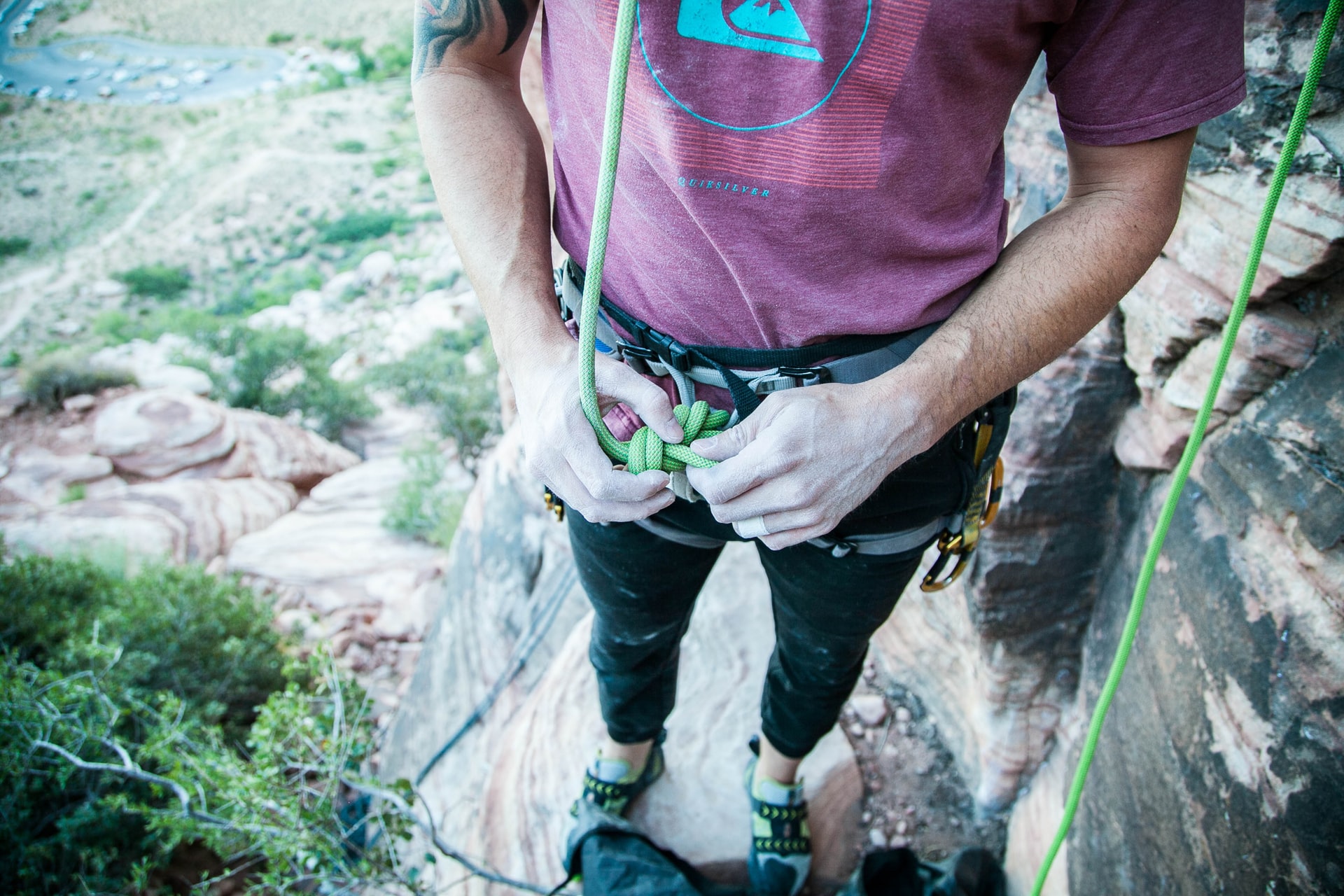Many climbers swear by liquid chalk either in addition to or instead of using regular chalk for rock climbing. It improves your grip on the rock and can be cheaper than just using loose or block chalk.
In this article, we run through how to make liquid chalk using just two ingredients, when it’s best to use it and why it isn’t for every climber.
What’s Liquid Chalk Made Of?
Liquid chalk is a mix of standard climbing chalk (magnesium carbonate) and alcohol. When you rub a small amount into your hands, the alcohol evaporates, leaving a thin layer of chalk on your skin.
Because it’s suspended in a liquid solution, you use less chalk than coating your hands with loose chalk. Liquid chalk works great on its own or as a base layer at the start of your climbing session.
You can buy liquid chalk at the climbing gym or online, but it’s quick, easy and cheap to make your own. Making your own also means you can use a brand of chalk you like and tweak the proportions to suit you.
How to Make Your Own Liquid Climbing Chalk
Liquid climbing chalk is made from a 2:1 ratio of chalk to alcohol.
Most climbers use rubbing alcohol (isopropyl alcohol) to make liquid chalk as it’s cheap, easy to get hold of and evaporates quickly. Look for a bottle that has an alcohol content of 70% and bear in mind that it does smell a bit.
If you’re looking for alternatives, ethanol is one option, but it won’t evaporate as quickly (do you really want to be waving your hands around to dry while someone grabs your route?). You could even use vodka, but we feel that has better uses!
Step 1: Grind Your Chalk to a Fine Powder
If you already use powdered chalk, you can skip this step, but if you use block chalk (which is usually cheaper), you’ll need to break the block down into a powder. You can do this using a pestle and mortar or by putting small pieces in a plastic bag and using a rolling pin to smash them to smithereens. (Also good for anger management!)
Step 2: Mix Chalk and Alcohol in a 2:1 Ratio
Put your crushed chalk into a bowl or container and add the rubbing alcohol a little at a time, stirring constantly until you get a chalk paste.
You want the consistency to be similar to toothpaste or hand cream to make it easy to rub into your hands. If you prefer a thinner chalk, just add a bit more alcohol.
Step 3: Transfer Your Liquid Chalk to an Airtight Container
The downside of homemade liquid chalk is that it doesn’t keep very well. The alcohol will slowly evaporate, particularly in warm conditions, leaving dry, caked chalk behind.
It’s best to make liquid chalk in small volumes as and when you need it and make sure you store it in an airtight container. A small squeezy bottle such as a leak-proof travel shampoo bottle is ideal as it’s easy to squeeze the chalk onto your hands and won’t take up much room in your climbing bag.
How to Use Liquid Chalk
Squeeze a small coin-sized amount of liquid chalk onto your hand. Rub your hands together, making sure you coat both palms and your fingertips.
Make sure you let the chalk dry completely before tying in or pulling on your rock shoes, so it doesn’t rub off.
Depending on how sweaty your hands get and how long you’re climbing for, you may only need to apply liquid chalk at the start of your session.
Why Use Liquid Chalk for Rock Climbing
I’ve been using liquid chalk for years. I don’t use it every time I go climbing as my hands can get quite dry and sensitive, but there are situations when it comes in really useful.
Here are the top reasons for using liquid chalk:
- It’s more efficient. You may only need to chalk up once at the start of your session and even if you have sweaty tips, liquid chalk provides a great base for chalk to stick to if you need to dip your fingers in your chalk bag mid-route.
- You’ll need less chalk (great if you’re packing for a long trip).
- Liquid chalk limits chalky marks on the rock, making it better for the environment.
- You’ll spend less time chalking up while climbing. I almost always apply liquid chalk before a redpoint attempt when sport climbing so I don’t waste energy chalking up while on the route.
- It’s great in hot or humid weather. My hands get super sweaty when it’s hot and using liquid chalk saves me getting through multiple bags of chalk on a climbing trip.
- Some climbing gyms ban loose chalk because of the clouds of dust and mess it causes. Personally, I’m not a huge fan of chalk balls as I find it hard to squeeze enough chalk out of them, so on these occasions, liquid chalk is my friend.
When NOT to Use Liquid Chalk
Liquid chalk doesn’t suit everyone. If you have sensitive or very dry skin then you may find the alcohol in liquid chalk irritates your skin or causes it to crack. And if you’re prone to picking up cuts and split tips, the alcohol in liquid chalk will sting.
If you want the benefits of liquid chalk but have sensitive skin, it may be worth trying Friction Lab’s Alcohol-Free Secret Stuff. It’s a liquid chalk but as it doesn’t use alcohol, it’s friendlier on your skin.
As some people find their skin is more sensitive to certain brands of climbing chalk, one advantage of making your own liquid chalk is that you can use a brand of chalk that you know works for you.

